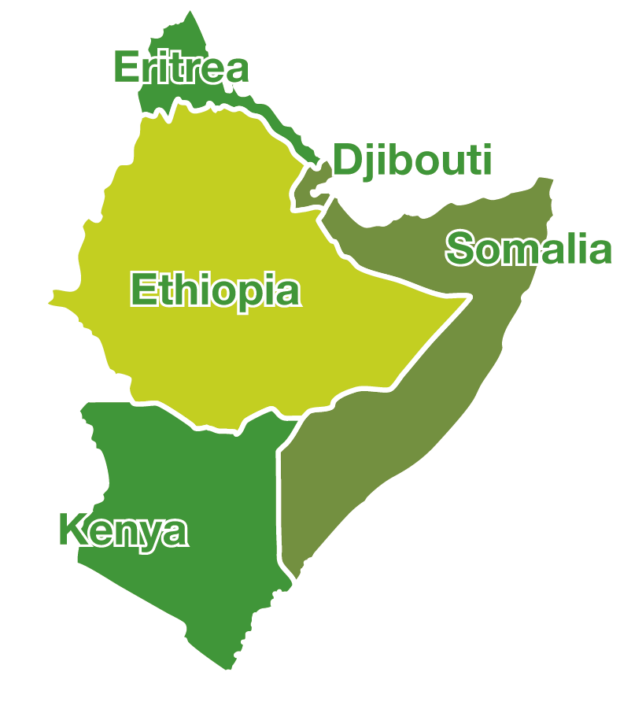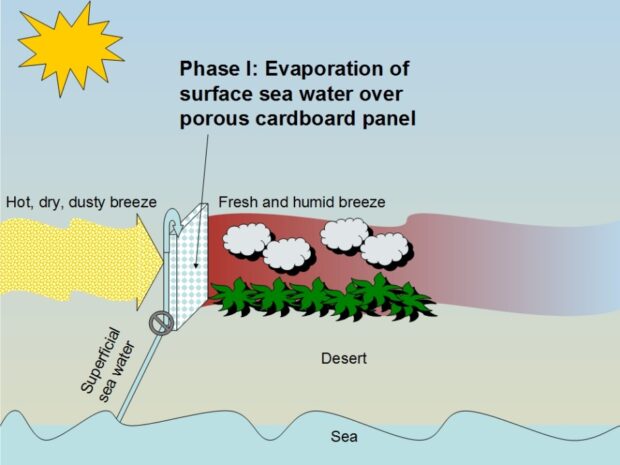By 2050 global agricultural output will need to increase by 60% on current levels to meet demand for food. Agricultural output on such a scale will put an increased strain on resources such as water. Lack of fresh water supply for agriculture is becoming an acute problem, brought to light by the current drought in California. Arid regions such as the Persian Gulf, Mediterranean, and the Horn of Africa have long faced problems with water scarcity in agriculture. Seawater Greenhouse Ltd is collaborating with Aston University, and Gollis University (Somaliland) on a new project in the Horn of Africa jointly funded by DFID through the Agri-tech Catalyst.

Why is the project based in Somaliland and the Horn of Africa?
The Horn of Africa is one of the most food insecure regions in the world. According to the FAO all the countries in the Horn of Africa are considered to have high or moderately high levels of food insecurity. In Somalia, only 1.5% of the 6000 square kilometres are cultivated, and average yields are just 0.5 tons per hectare per annum (compared to 700 tons per hectare in commercial greenhouses). Project partner Abdi Hersi, alongside Gollis University are interested in bringing technology developed by Seawater Greenhouse to Somaliland. High temperatures, low and erratic rainfall, and too much wind have made conventional agriculture in Somaliland marginal. The project aims to overcome these problems and provide a sustainable method to increase crop yields allowing farmers, comprising 75% of the population, to maintain a consistent income.
How will the project work?
The key problem that arid regions, such as the Horn of Africa, face is that plant transpiration is far higher than precipitation. Seawater Greenhouse uses seawater, wind, a low-cost net structure, and evaporative cooling techniques to significantly reduce transpiration.

Seawater is pumped from the sea using solar energy, with reverse osmosis creating freshwater for irrigation. The remaining seawater is trickled over a cardboard pad, adjacent to the wind direction, to create a cool and humid breeze that reduces transpiration. A positive side effect of using seawater is that it reduces the chance of disease through creating a sterile environment. The low-cost net structure is used to contain the cool air, control internal conditions, and provide shade to the crops. Downstream, salt is extracted from the seawater so that nothing is wasted and further value is added. Remaining desalinated water can be used to irrigate the area around the shade net structure enabling traditional crops to be grown to further supplement farmers’ incomes.

What will be the benefits of the project?
Currently Somalis have few options for a consistent sustainable income in farming, with semi-nomadic pastoralism dominating. This project aims to provide Somali farmers increased crop yields within the Seawater Greenhouse, irrigation water for traditional crops surrounding the structure, and a source of high quality salt for culinary use and for livestock.
How has Agri-tech Catalyst funding helped support the project?
The Agri-tech Catalyst was a perfect fit for the Seawater Greenhouse for a number of reasons. The project was too risky to gain funding from venture capitalists, so the Catalyst provided funding. This enabled the project, that has benefits beyond purely economic, to build a demonstration seawater greenhouse in Somaliland.
Click to find out more information about Seawater Greenhouse.

Recent Comments